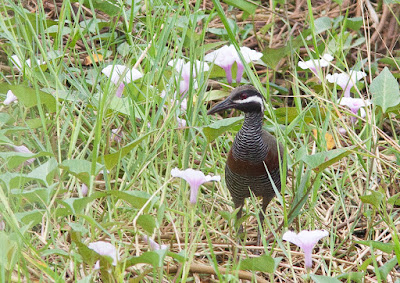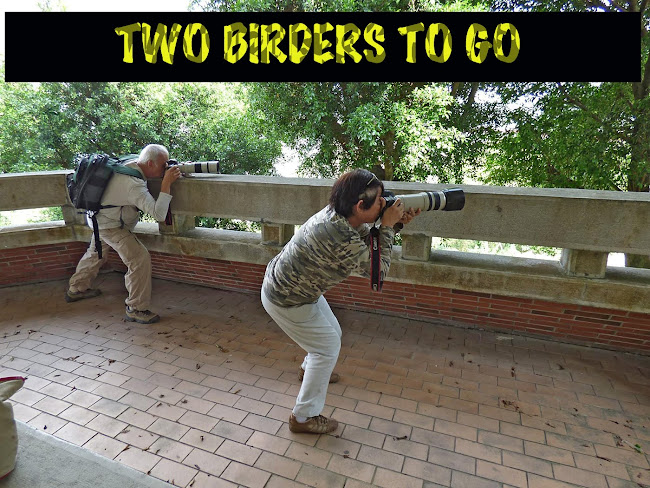The Candaba Wetlands is one of the prime birding areas in the Philippines. Or I should now say, "used to be". Whereas before hundreds, if not thousands, of migrant waders and ducks can easily be seen here, now there was an obvious disparity since the birds we saw yesterday were much lower in number. Sure, there were hundreds of Black-winged Stilts but that's just about it. A few Wood Sandpipers here and there, fewer Long-toed Stints and a couple of Grey and Purple Herons. We did not even see a single Common Kingfisher! There were ducks, mostly the endemic Philippine, but they were too far off for a decent photograph. Good thing some Wandering Whistling Ducks found a place to settle that was within photographic range.
The primary reason for this, I believe, was because the watery area where these migrants settle are now rice fields, newly planted even. The local Black-crowned Night Heron colony population seemed to have dwindled as well.
Thankfully, the local avifauna was thriving well. The most ubiquitous among these were the Pied Bush Chat, Striated Grassbird, Chestnut Munia and Long-tailed Shrike.
 |
| Pied Bush Chat |
 |
| Chestnut Munia |
 |
| Long-tailed Shrike |
 |
| Striated Grassbird |
 |
| Barred Rail |
 |
| Buff-banded Rail |
 |
| Philippine Swamphen |
 |
| White-browed Crake |
 |
| White-breasted Waterhen |
 |
| Blue-tailed Bee-eater |
 |
| Yellow Bittern |
When we finally arrived home my wife was so exasperated. She told me that this could be our last birding trip because we don't want to go through this nightmare again. "It's for your own sake," she said, "because you're the one driving." I'm afraid I had to agree with her. At my age - a year less than 70 - my physical endurance is no longer what it used to be. Considering that we had to wake up early, go birding (which involves standing for long periods, walking while carrying my heavy camera equipment, and sometimes even trudging over uneven trails) then having to sit for seemingly countless hours inside our vehicle waiting for the traffic to move inch-by-inch towards home, I don't think I can handle that on a regular basis. And that drives me mad.






































